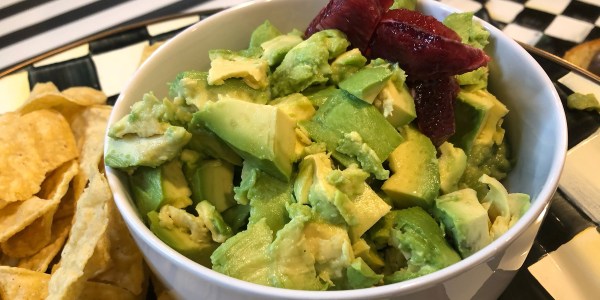Citrus may remind you of warm sunshine, but it's actually hitting it's peak season right now.
Oranges — a winter fruit in many parts of the U.S. — are known for their high vitamin content, but they are also bursting with other nutrients like potassium, magnesium and various antioxidants. And since oranges are made up of mostly water, they're a hydrating snack to have on hand before or after a workout.
Oranges are most well-known for their immune-boosting properties, but they combat inflammation and play a role in eye and heart health, too. Learn the nutrition facts and benefits of oranges and some surprising recipes to include them in your daily diet.
Oranges nutrition
One orange has:
- 73 calories
- 1 gram protein
- 17 grams carbohydrates
- 3 grams fiber (12% daily value (DV))
- 232 milligrams potassium (9% DV)
- 83 milligrams vitamin C (110% DV)
Orange benefits
Let’s start with a well-known fact: Eating an orange provides you with a heaping dose of vitamin C, a nutrient that is most recognized for its role in immune health. Vitamin C protects the body against foreign invaders, and research suggests that having enough vitamin C in the diet may prevent and treat infections. Insufficient amounts of vitamin C in the diet can cause scurvy — a condition that is rare in modern times, but is accompanied by weakness, fatigue, anemia and frequent infections.
Oranges are also a good source of potassium, a mineral that works to regulate blood pressure and fluid balance within the body. Because most Americans don’t meet their daily potassium needs (3400 milligrams for males and 2600 milligrams for females), the 2015–2020 Dietary Guidelines for Americans lists potassium as a nutrient of concern. Research shows that having adequate potassium in the diet is associated with lower blood pressure levels, reduced cardiovascular disease risk and decreased chance of having a stroke.
Oranges also contain an antioxidant called hesperidin, which suppresses inflammation and has been linked to cardiovascular health, immune health, cognitive function and bone health. The majority of the hesperidin in oranges is found in the peel. Since a whole orange (including the peel) is squeezed to make a glass of OJ, hesperidin is most abundant in orange juice.
Lastly, oranges may help improve your sight. The fruit gets its color from a plant compound called beta carotene, which the body converts into vitamin A. The National Eye Institute examined the role of beta carotene on age-related eye diseases and found that supplementation with beta carotene, vitamins C and E, zinc, and copper lowered the risk of developing advanced age-related macular degeneration (AMD), the leading cause of visual impairment and blindness in the United States. In addition, oranges contain lutein and zeaxanthin, two plant compounds that have also been studied for their role in treating dry eye.
Are there drawbacks to eating oranges?
Eating oranges is not only safe — it’s encouraged. That said, oranges are an acidic fruit, and those who suffer from GERD (gastroesophageal reflux disease) — a condition in which the stomach acid flows back up into the esophagus — may experience discomfort after eating oranges. In addition, individuals with kidney disease are usually advised to stay away from foods that are high in potassium, like oranges, since their kidneys cannot process the mineral.
Fun facts about oranges
There are tons reasons to stock up on oranges besides the health benefits. Here are a few of them:
Eating an orange can help with hydration
There’s a reason orange slices are handed out at kids’ sporting events — they are tasty, sweet and hydrating. According to the Academy of Nutrition and Dietetics, you should get about 20% of your daily water from food. One orange is 86% water, making it a hydrating fruit. Plus, potassium is one of the electrolytes we lose when we sweat, so eating an orange can help replace fluids after a tough workout.
A glass of 100% orange juice is considered one serving of fruit
It’s a common misconception that orange juice is packed with sugar, but an 8-ounce glass of 100% OJ that is made from just oranges has zero added sugar. It also contains all the beneficial nutrients that are in oranges, like vitamin C, potassium, vitamin A and hesperidin.
So, if you don’t feel like eating your fruit — you can drink it instead! One 8-ounce glass of orange juice counts as one of your two daily servings of fruit. Plus, most brands of OJ are fortified, meaning that calcium and vitamin D are added, two nutrients that are essential for bone health. That said, the 2020-2025 Dietary Guidelines suggests no more than half of your daily fruit come from juice, so stick to one glass per day.
How to use orange peel
Think twice about tossing that orange peel. Although it may seem useless, the orange peel holds a ton of flavor and has many culinary purposes. The easiest way to use the peel is to use a microplane to grate it into a flavorful zest. Add the zest to baked goods or a warm bowl of oatmeal. The peel also adds flavor to drinks, and it looks beautiful lining the rim of a glass for a cocktail or hot tea. You can also add the whole peel to simmering soups, jams and jellies for a citrusy flavor. Lastly, for a sweet treat, make a simple candied orange peel.
Healthy orange recipes
The juicy, acidic nature of oranges lends itself well to sweet and savory dishes alike. For a fun way to use oranges in everyday food and drinks, try any of these recipes.









